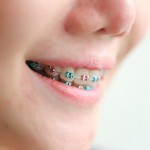
Orthodontic treatment can influence the profile of the patients and there is ongoing debate regarding the comparable effect of extraction verses non-extraction therapy on soft tissue profiles.
The aim of this review was to assess soft-tissue changes after orthodontic treatment with premolar extractions in Class II division 1 malocclusion subjects.
Methods
Searches were conducted in the PubMed, Web of Science, Embase, and Scopus databases. Randomised clinical trials, retrospective or prospective cohort studies providing details of cephalometric facial soft-tissue changes after orthodontic treatment with premolar extractions in Class II division 1 malocclusion were considered. Study selection was carried out independently by two researchers with study quality being assessed using the Cochrane risk of bias tool.
Results
- 13 studies were included, 8 were retrospective 3 prospective and 2 unclear.
- 6 were considered to be at low risk of bias and 7 at high risk of bias.
- The commonest cephalometric measurements found were nasolabial angle (NLA) and distance from upper and lower lips to Ricketts Aesthetic line (UL-E and LL-E, respectively).
- Statistically significant soft-tissue changes reported included nasolabial angle (NLA) increasing from 2.4 to 5.40degrees in 2-premolar extraction protocol and from 1 to 6.84degrees in 4-premolar extraction protocol.
- Retrusion of the upper and lower lips were also verified, with less retraction of the lower lip in 2-premolar extraction groups.
Conclusions
The authors concluded:
When Class II division 1 malocclusion is treated with premolar extractions, the NLA increases and the lips are retracted. However, there is less retraction of the lower lip in the 2-maxillary premolar extraction protocol.
Comments
This review focuses on soft-tissue outcomes in one type of malocclusion. While a number of databases have been searched the bulk of the included studies are retrospective in nature. There are also relatively small with the largest included study including just 50 extraction patients (range 14-50). The authors also highlight the lack of standardisation of reporting across the literature identified. There is also the potential for measurement error, which is not discussed. As we have noted in other blogs there is a clear need for greater consistency in recording common outcomes across the dental literature and the development of core outcome sets, a development supported by the COMET initiative. Consequently, the findings of this review need to be interpreted with caution.
Links
Primary paper
Janson G, Mendes LM, Junqueira CH, Garib DG. Soft-tissue changes in Class II malocclusion patients treated with extractions: a systematic review. Eur J Orthod. 2015 Nov 29. pii: cjv083. [Epub ahead of print] Review. PubMed PMID: 26620831.

Class II malocclusion- premolar extraction and soft tissue profile https://t.co/IcZnJ61iPF
Nasolabial angle increased with premolar extraction in class II division malocclusions? https://t.co/IcZnJ61iPF
Soft-tissue changes after orthodontic treatment with premolar extractions? https://t.co/IcZnJ61iPF
Limited evidence for impact on soft tissue profile after premolar extraction https://t.co/IcZnJ61iPF
Don’t miss – Class II malocclusion- premolar extraction and soft tissue profile https://t.co/IcZnJ61iPF
Agreed the review is low quality https://t.co/IcZnJ61iPF https://t.co/1cFf3OLE8E
Kevin O’Brien’s blog has further relevant comments on this reviews see http://bit.ly/1n2MThr